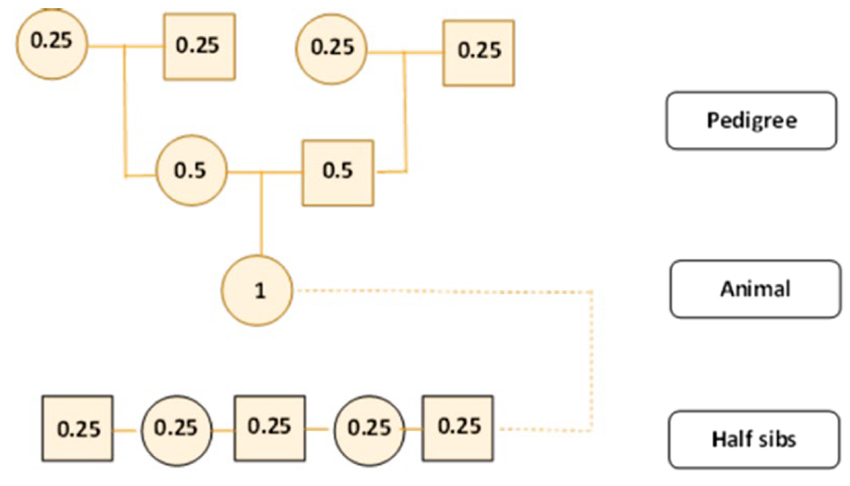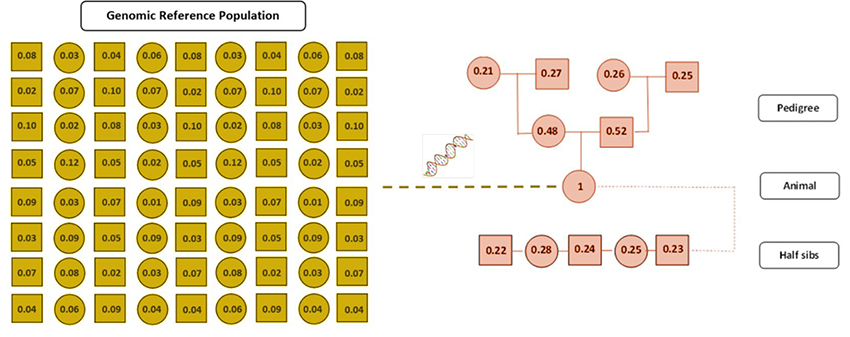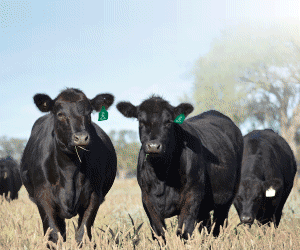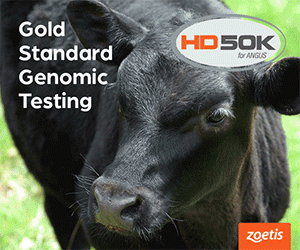Why should you consider using genomic technology?
Genomics offers advantages by:
- Enabling the relationship between animals to be estimated when no, or incomplete pedigree information is available
- Enabling a more precise estimate of the genetic relationship between two animals who are related by pedigree. i.e. rather than assuming an animal has 25 percent of its genes in common with each grandparent (based on the law of averages), genomics assesses the random shuffle of chromosomes the animal has inherited to provide a more precise indication of the proportion of genes that an animal has in common with each relative.
- Enabling the relationship between animals unrelated by pedigree to be determined, and any performance information that is available on these animals to be used in the calculation of the animal’s breeding value. e.g. pedigree may indicate that two animals are unrelated, but in reality, genomics indicates that they share a proportion of genes in common.
This leads to:
- Increased accuracy on traits
- Increased accuracy for hard to measure traits or traits recorded in other herds that your animals may or may not have a relationship with by pedigree
- Can be tested for at the same time and with the same sample used for parentage verification and genetic condition testing
- Allows for higher accuracy in selection at a younger age
In traditional, pedigree based genetic evaluation, the relationships between animals are determined by pedigree alone.

In a genetic evaluation that incorporates genomics using the ‘relationship’ approach, the relationships between animals are determined by combining pedigree and genomic information.

The real-world examples below demonstrate how utilisation of genomic relationships improves the estimation of the relationship between animals in a single step genetic evaluation.
Based on pedigree information, the sires would be estimated to have a relationship of 0.5 with each of their offspring. Similarly, the sire’s offspring would each be expected to have a relationship of 0.25 with one another.
Genomic testing reveals that while, on average, these relationships are correct, the relationship between the sire and each individual offspring differs, and some offspring are more closely related to each other than they are with others.







